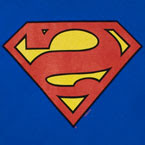In his recent book Cultural Amnesia, Clive James notes that celebrated screenwriter William Goldman has written entertaining books demonstrating how even the most entertaining film can’t be written like a book. If the story isn’t first worked out to make cinematic sense, no amount of excellent dialogue will save it from being an utter pile of crap. James later says that in films, “the dialogue is a secondary source of narrative, not a primary one” (436).
While I am far from even a lay expert on film, I do know a fair amount about visual narrative, and I would have to say that James eloquently sums up the primary driving narrative of films: the images. I have resisted conflating the image/text nature of comics and films for a while now, believing that the forced sequentiality of film limits the form in a way that the multi-linearity of comic books aren’t and thus discredits much of the comparison, but I would think that James’s adage about film applies: dialogue in comics is a secondary form of narrative.
While this may seem unsurprising, it does give us a lens by which to view the recent Star Trek comic work of David Tischman. I have often criticized Tischman for his inability to write well in the comic format, which is another way of saying that his comics don’t make comic sense, in the same way Goldman warns against trying to write a film as anything else. Of course, I am not privy to the way Tischman constructs his stories, but they seem to me to be plotted out like a prose writer would plot a short story.
 By treating the visual elements of the text as secondary forms of narration, he violates the very nature of comics; he dooms them to fail on this alone, despite whatever other merits they have. It doesn’t matter if the stories are exciting (which they aren’t) or if the dialogue is good (it isn’t). Tischman is not writing his narratives as visual narratives first, with all dialogue supporting the framework a secondary element. And as a result, he and IDW have put out some pretty atrocious comics.
By treating the visual elements of the text as secondary forms of narration, he violates the very nature of comics; he dooms them to fail on this alone, despite whatever other merits they have. It doesn’t matter if the stories are exciting (which they aren’t) or if the dialogue is good (it isn’t). Tischman is not writing his narratives as visual narratives first, with all dialogue supporting the framework a secondary element. And as a result, he and IDW have put out some pretty atrocious comics.
